In the late middle ages and Renaissance, “fustian” meant an affordable fabric woven of two kinds of fibre – cotton & linen, or cotton & wool, or linen & wool.[1]
A lot of historical novels I’ve read mentioned fustian. It’s one of those words, like “curricle” or “cotehardie” that writers use to position their work in past time. It’s not something you’ll find in a present-day fabric shop unless it’s one that specializes in textiles for historical reenactors.
Last summer at Pennsic, a reenactment event that features a marketplace full of supplies for reenactors, I found a generous remnant of cotton/linen fustian and decided to make an “everyday” sottana of it, loosely based on what the women in Vincenzo Campi’s lively kitchen scene are wearing.
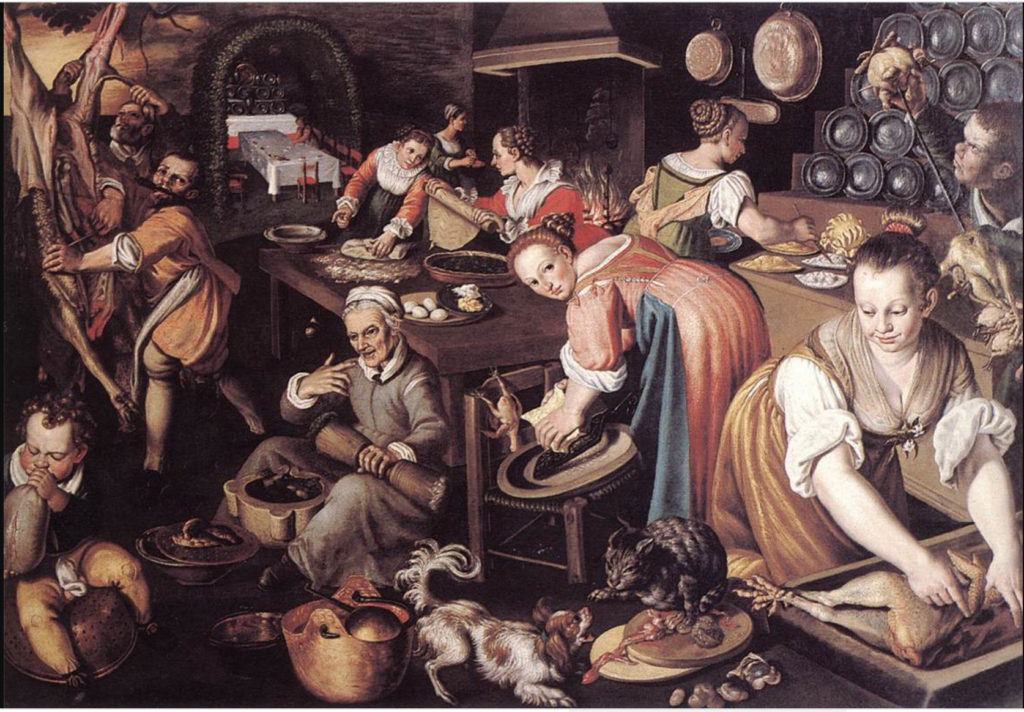
All of the materials I used would have been available in the late Renaissance, aside from a package of olive green iDye and a meter or so of synthetic whalebone.[2]
The materials:
- blue fustian fashion fabric
- “natural” cotton canvas interlining
- “natural” cotton muslin bodice lining
- lightweight linen for the skirt lining, dyed olive green [3]
- synthetic whalebone to reinforce the front edges of the bodice
- a small remnant (aka cabbage)[4] of silk for reinforcing the corners of the front neckline
- 21 brass aiglets. 20 are for the points tying the sleeves on, and the 21st is a tiny one for the lacing cord. I made that one myself . It’s my first attempt at making an aiglet, and I’m quite pleased with it. The lacing holes came out very, very small, and the purchased aiglets I have are too big to pass through them without using pliers
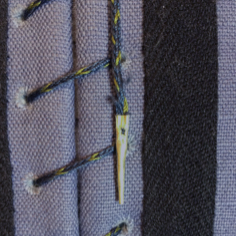
- a largish piece of cabbage of lightweight olive green wool for the sleeves
- cotton and linen threads for assembly, and, for touch of luxury, silk threads to make the eyelets and the lacing cord
- two kinds of black cotton braid – herringbone-patterned for the trim, and plain tabby weave for the sleeve points. Sewing the herringbone braid on, I discovered it has a tendency to pick up dust & cat hair. Luckily, it cleans up easily with a lint roller!
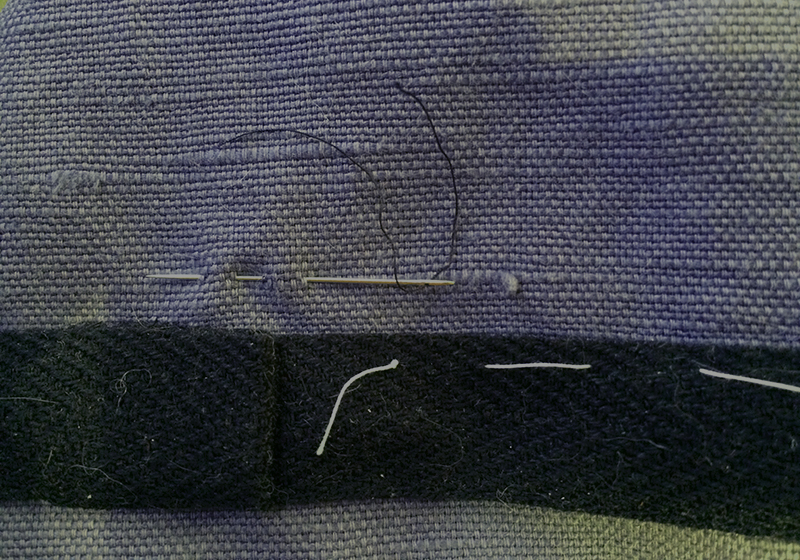
Except for the fustian and the braids for trim, all of the materials, including the packet of iDye, were from my stash! (Though I did have to buy some salt to add to the dye.)
For the bodice pattern, I used one that I had drafted a while ago. It was designed to side lace, but that was an easy fix – I turned the lacing edges into seams and created a centre-front opening. Then I made a muslin out of sturdy cotton canvas, tweaked the fit, and used the muslin as the underlining of the bodice.
Instead of bag-lining the bodice, I assembled it Renaissance-style. To minimize bulk at the shoulders, I sewed the shoulder straps in position and trimmed the excess fabric. Then I catch stitched the seam allowances over the canvas underlining, and slip stitched the lining in.
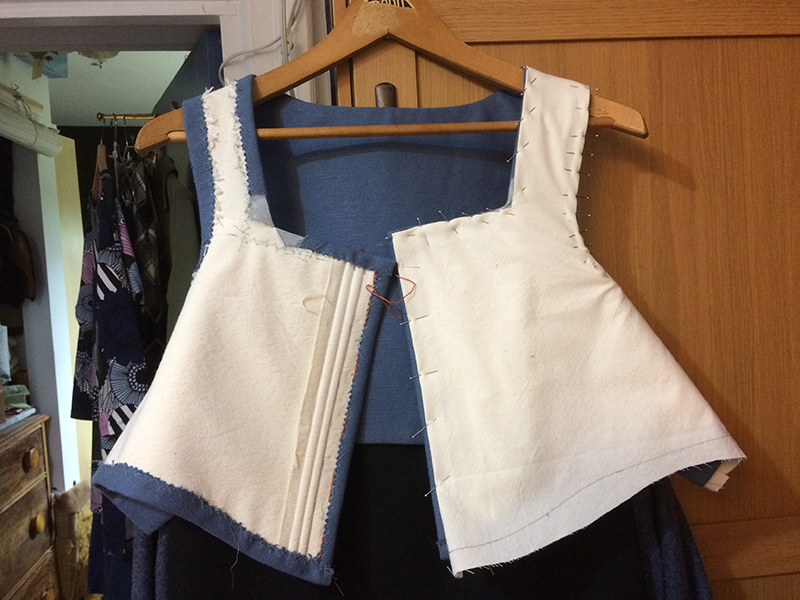
Once that was done, I whip stitched the pieces together and made the eyelets.
There’s no pattern for the skirt – it’s two full widths of the fustian, flat-lined, seamed at the centre front and back, and with the front seam left open for about thirty centimeters at the top so that I can get into the garment.
On the right hand side of the skirt I’ve made a fitchet – an opening so that I can reach my tie-on pocket. The edges of the fitchet are bound with a piece of navy blue linen from my cabbage basket.
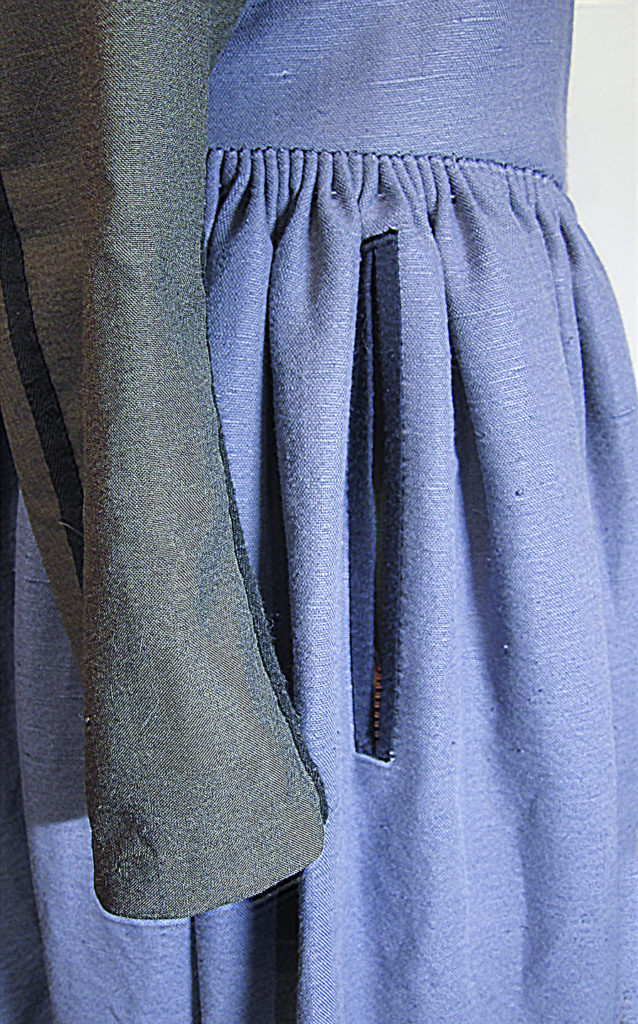
To gather the skirt to fit the bodice, I used cartridge pleats. I like cartridge pleats a lot, and use them whenever they’re appropriate.
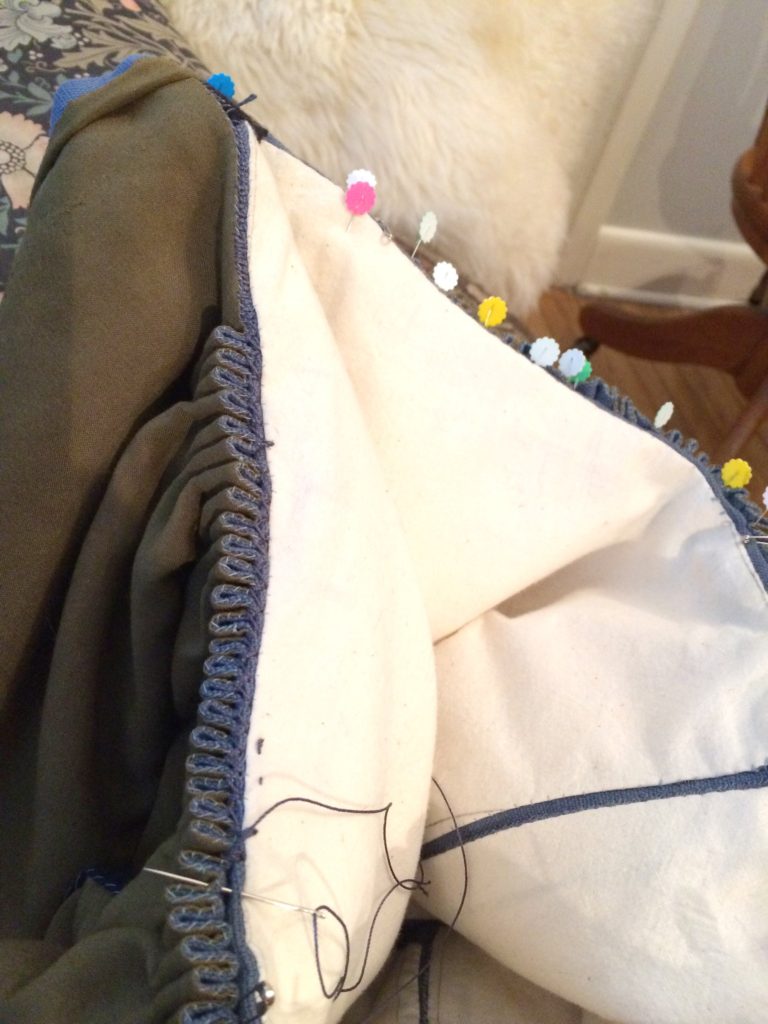
For the hem, I tried an experiment. I like padded hems; I like the way they make a skirt hang & move. For padding, I usually use wool felt. This time, because I want this sottana to be washable, and wool felt shrinks and gets lumpy, I used multiple layers of the fustian – seven if I remember correctly. It works as well as the felt!
The sottana is fully lined, and, aside from the long seams on the skirt and sleeves, it’s hand-sewn. Up to and including flat-felling the sleeve seams and the skirt seams where the raggedy shuttleless loom selvedges showed.
Between catch stitching the seam allowances, sewing in the linings, whip stitching the pieces together, clean-finishing the seams, hemming the top&bottom of the sleeves, making the eyelets, making the points, and sewing on the trim, it was a LOT of hand sewing!
Luckily, I enjoy hand sewing, and, all in all, I’m satisfied with how this project turned out!
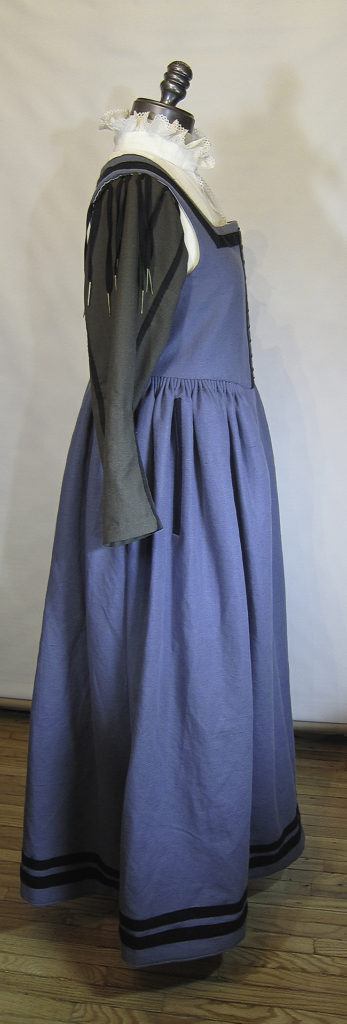
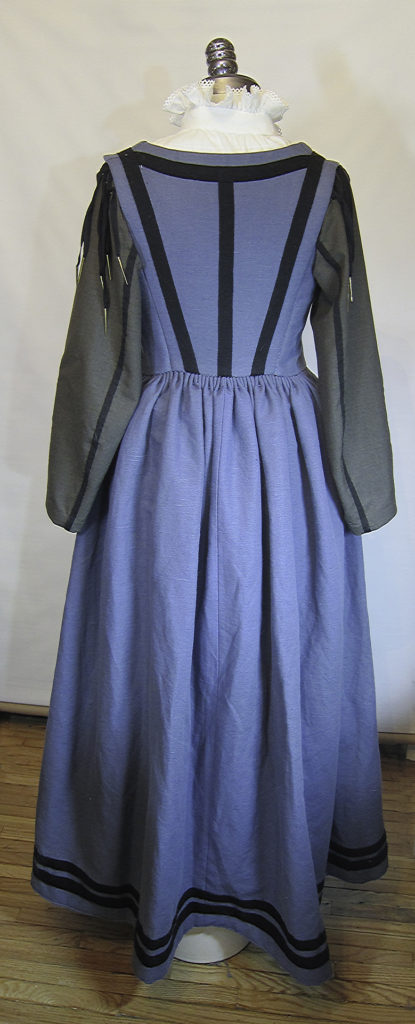
[1]the meaning of “fustian” has changed with time – in the late middle ages/Renaissance it meant a fabric woven of two kinds of fibre. By the nineteenth century, “fustian” meant cotton fabrics with a short, brushed pile, like corduroy. By the late 20th century, the word had become an archaism.
[2] I’m ignoring the fact that the materials were made with present-day processes rather than being organically grown, hand-harvested, plant dyed, etc. etc. And, though I’m not against all use of animal products, hunting whales is inexcusable in today’s world – therefore the synthetic whalebone.
[3] originally, this lining linen was bright egg yolk yellow. Linen is heavy, so when I found this cheap & lightweight linen, I bought a lot of it even though it’s a colour I wouldn’t usually choose – yellow is easy to overdye. Which I did. With iDye. In the washing machine.
[4] “cabbage” was the medieval/renaissance term for the fabric left over from making a garment, and the tailor got to keep it!

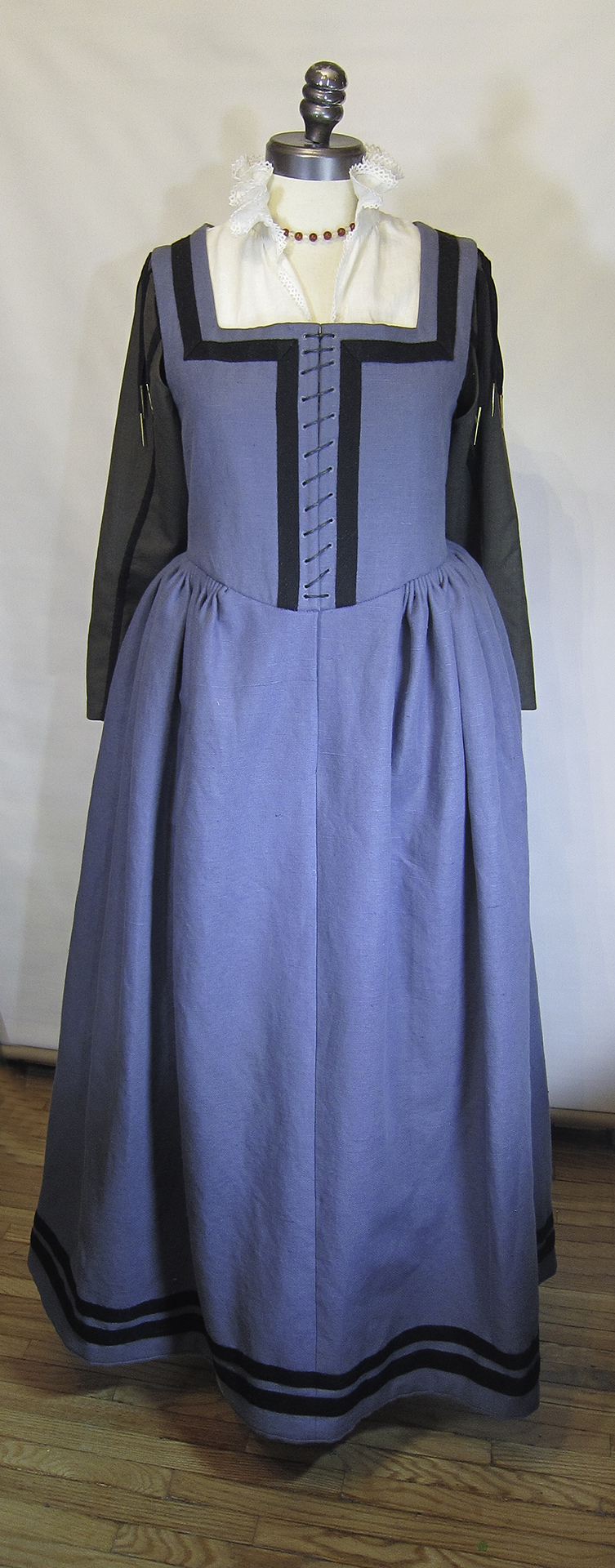
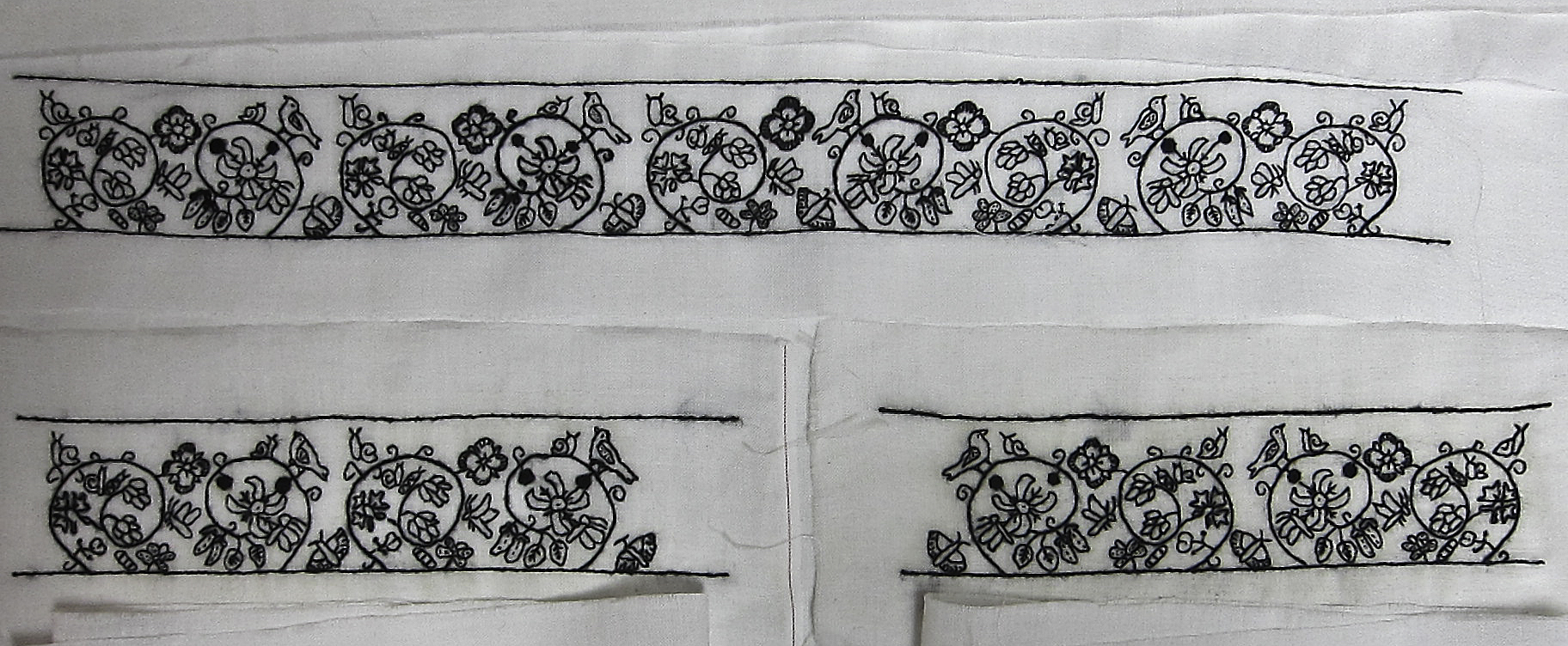
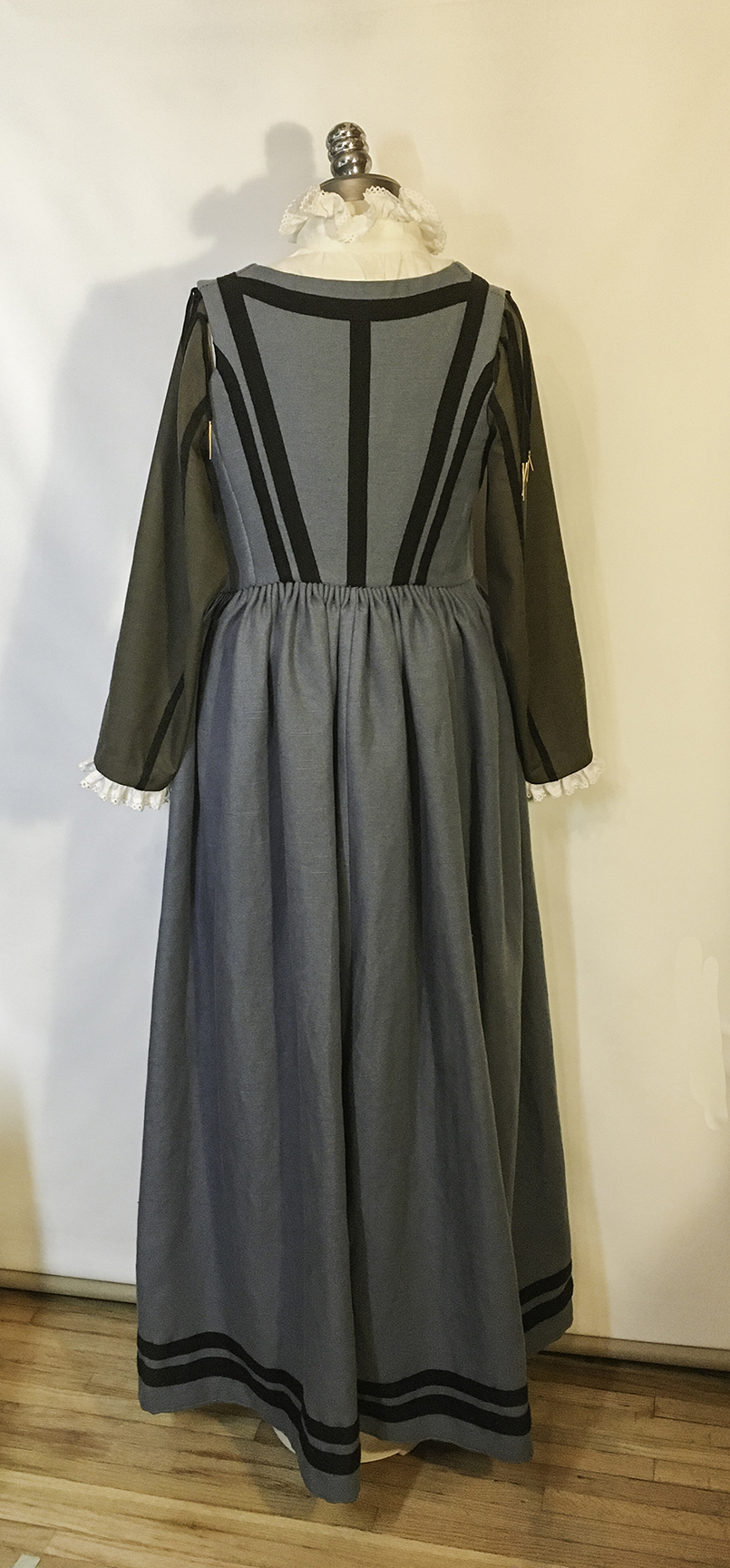
Lovely work!